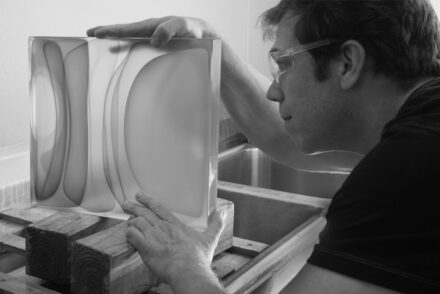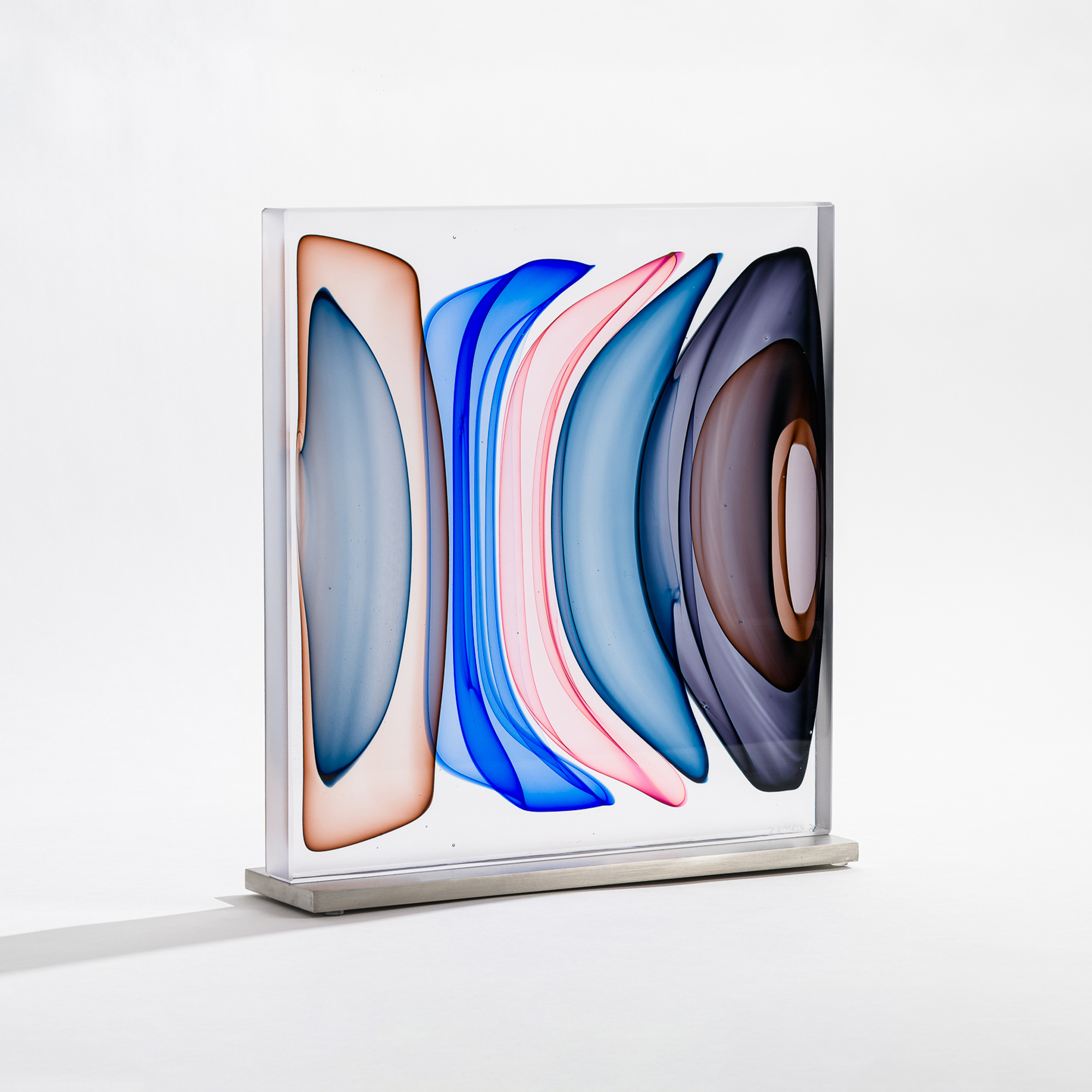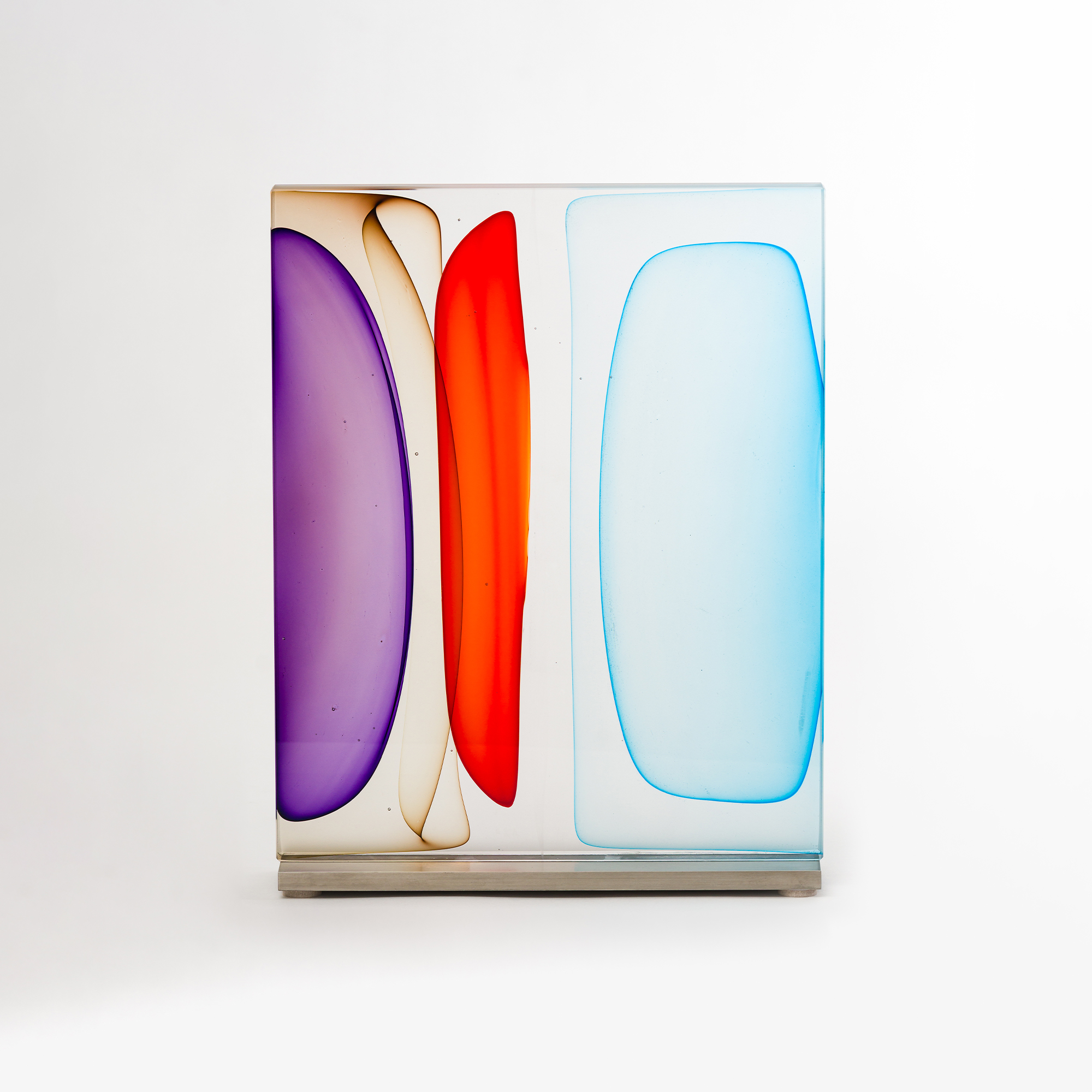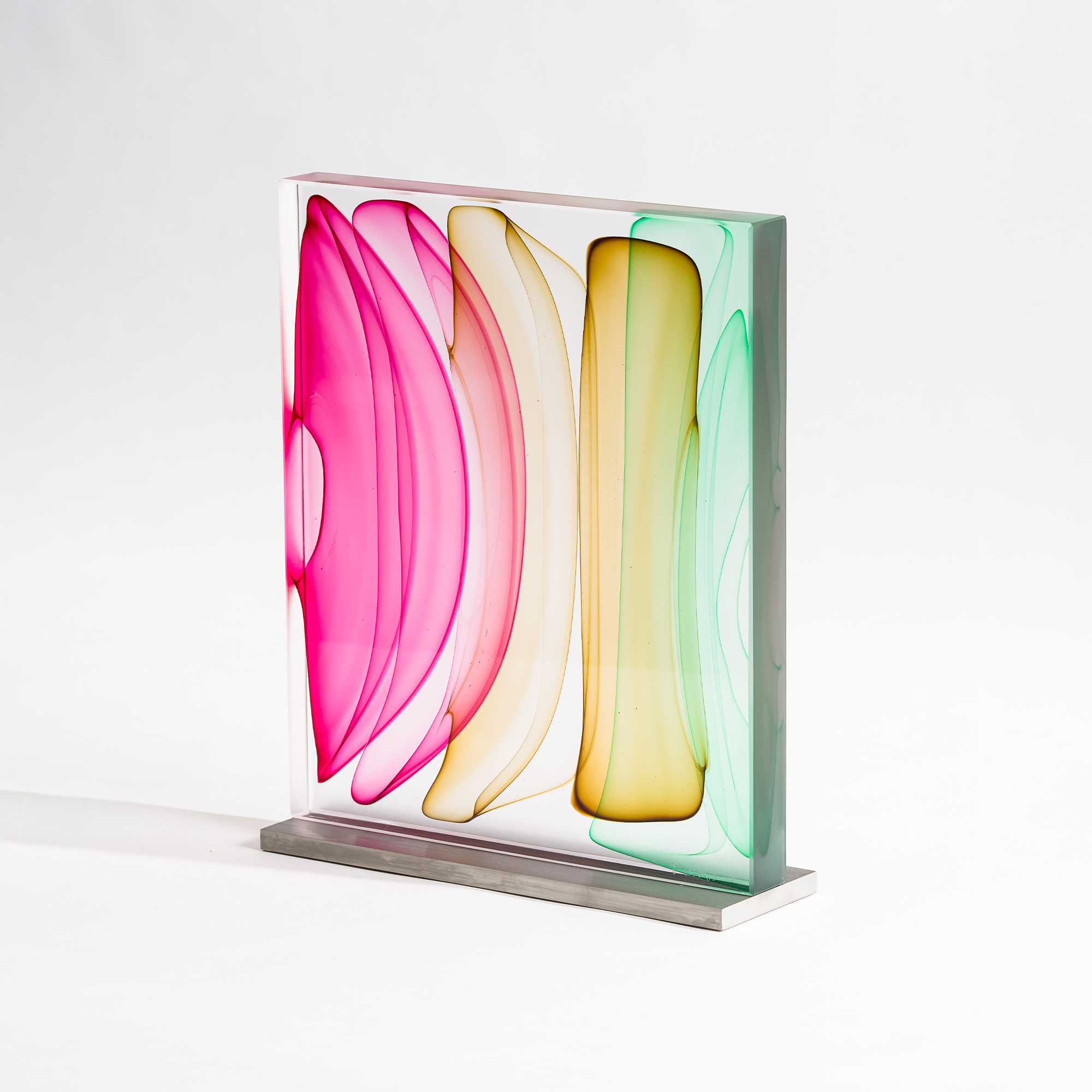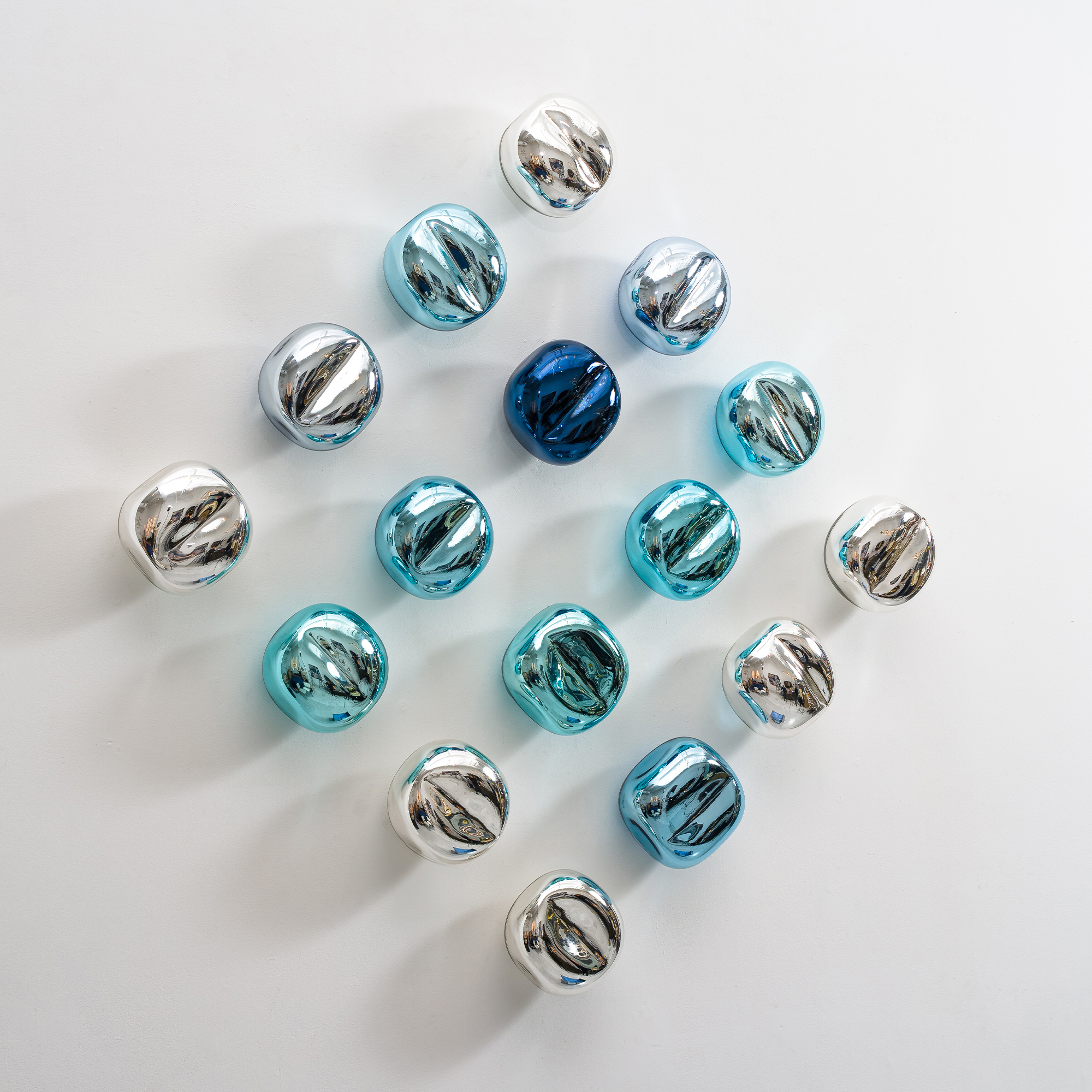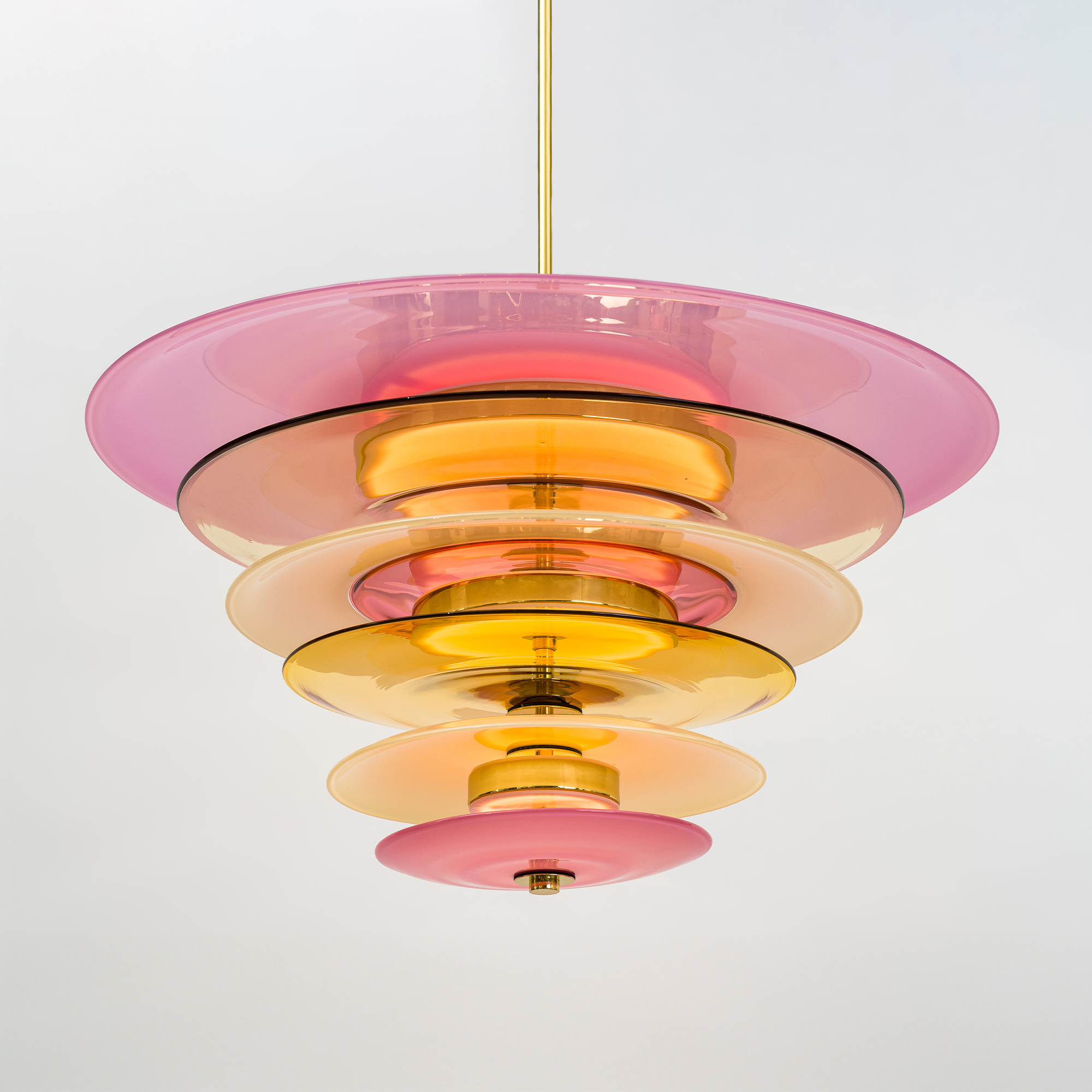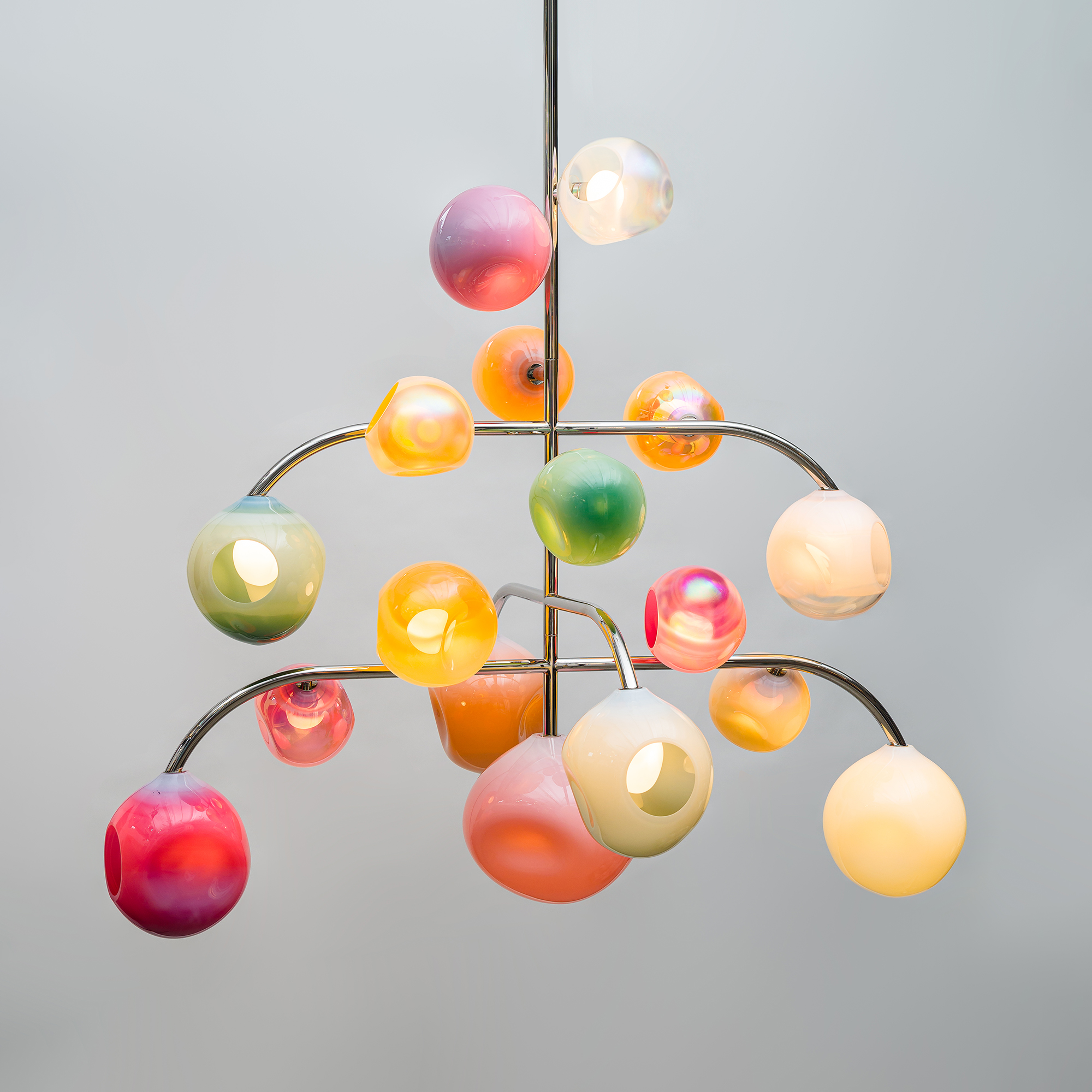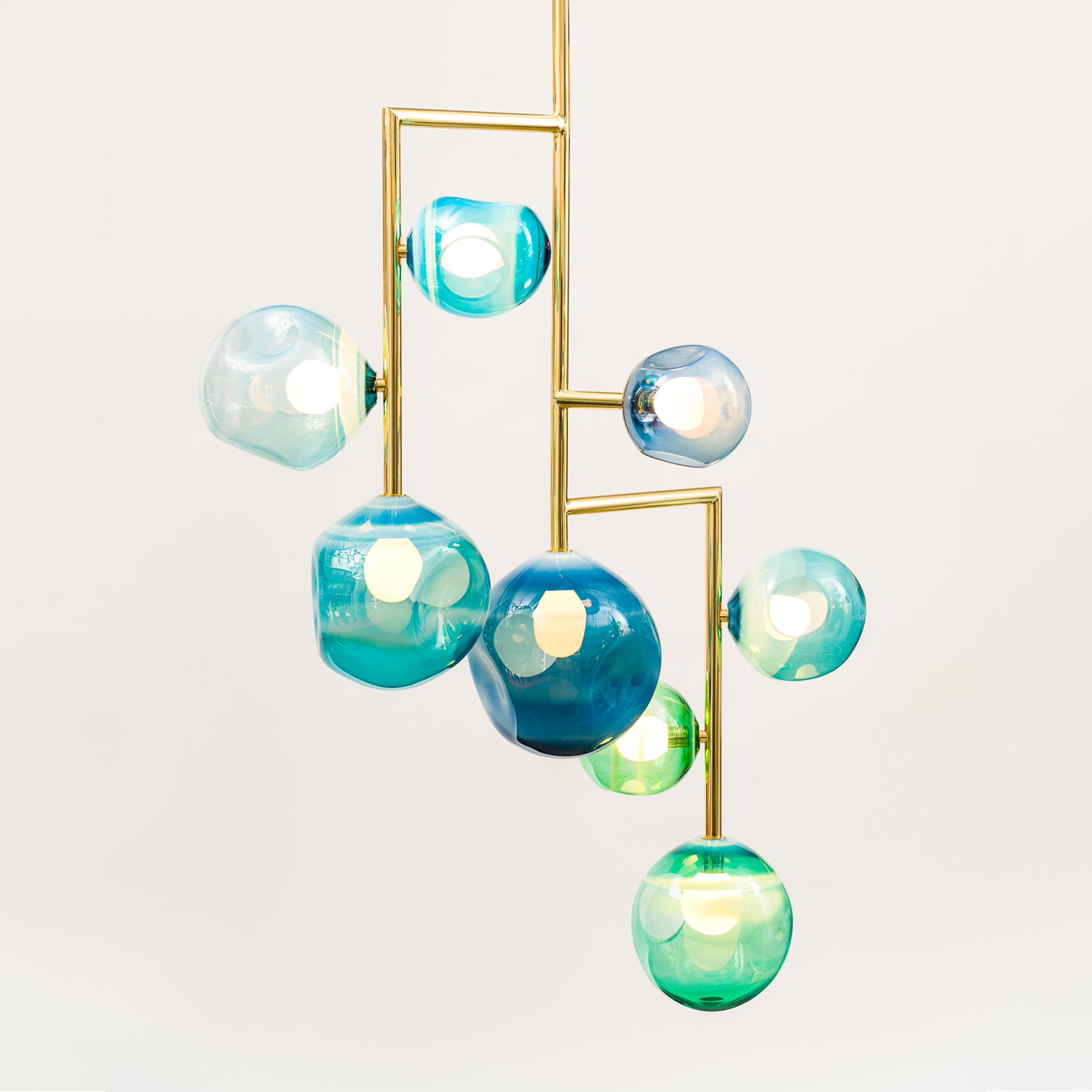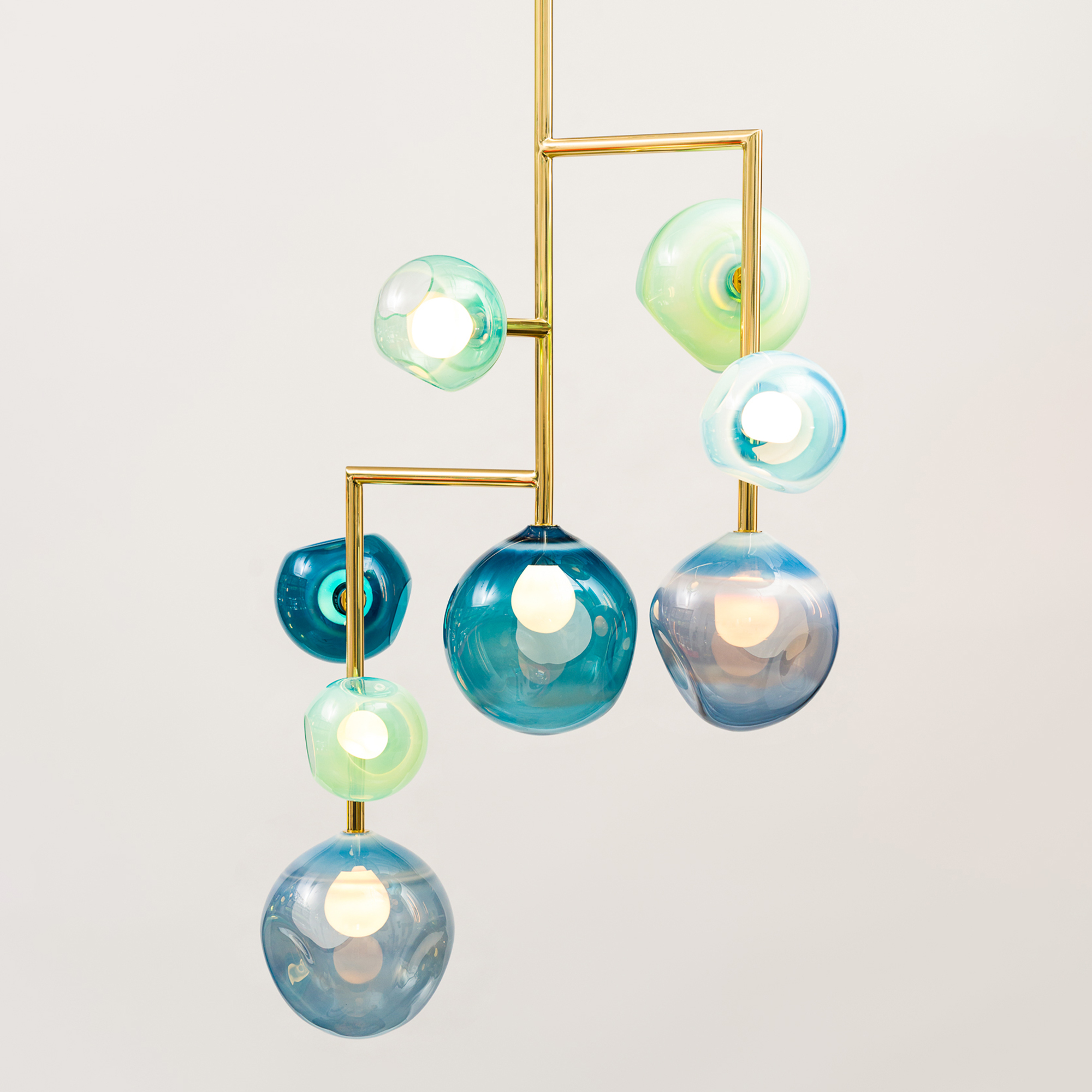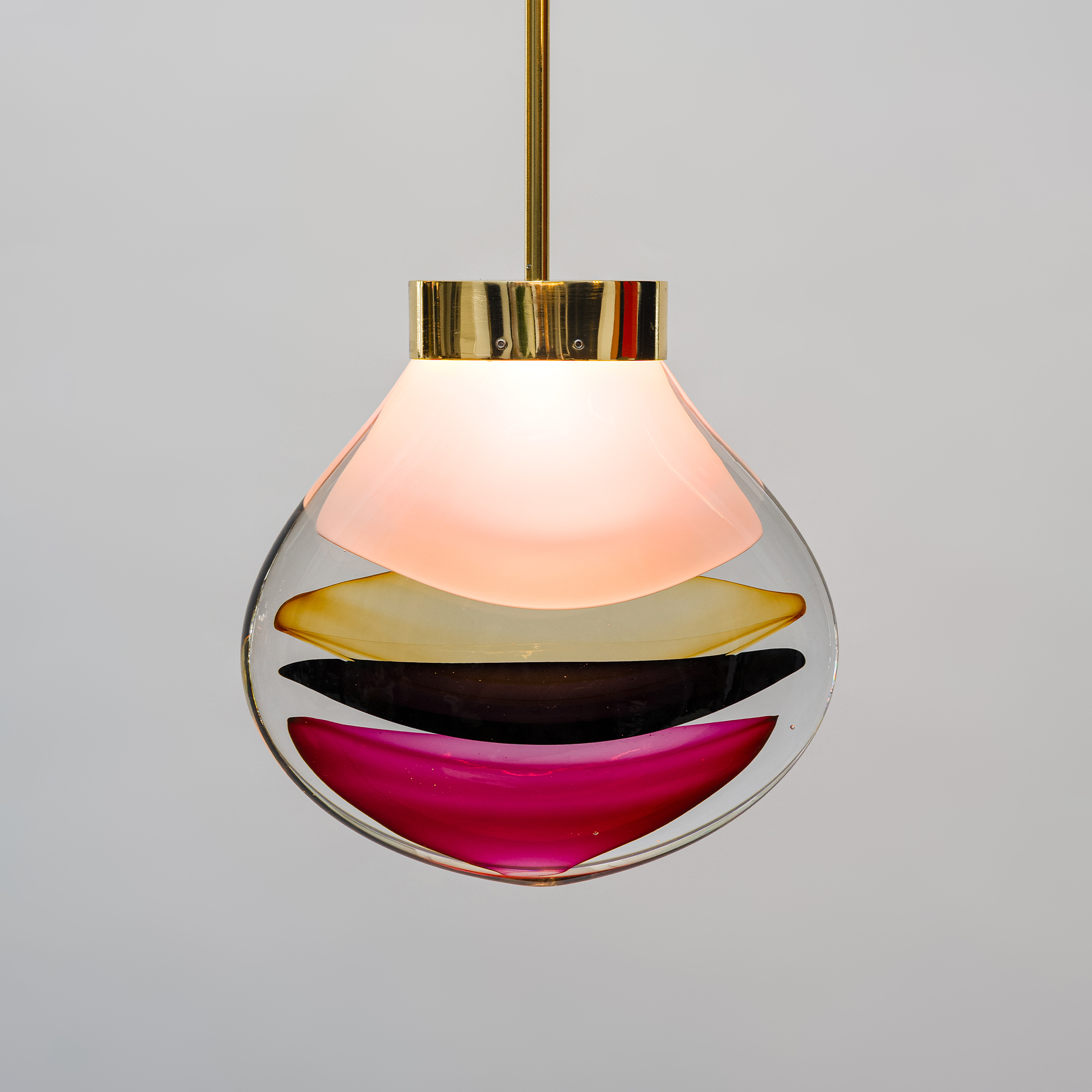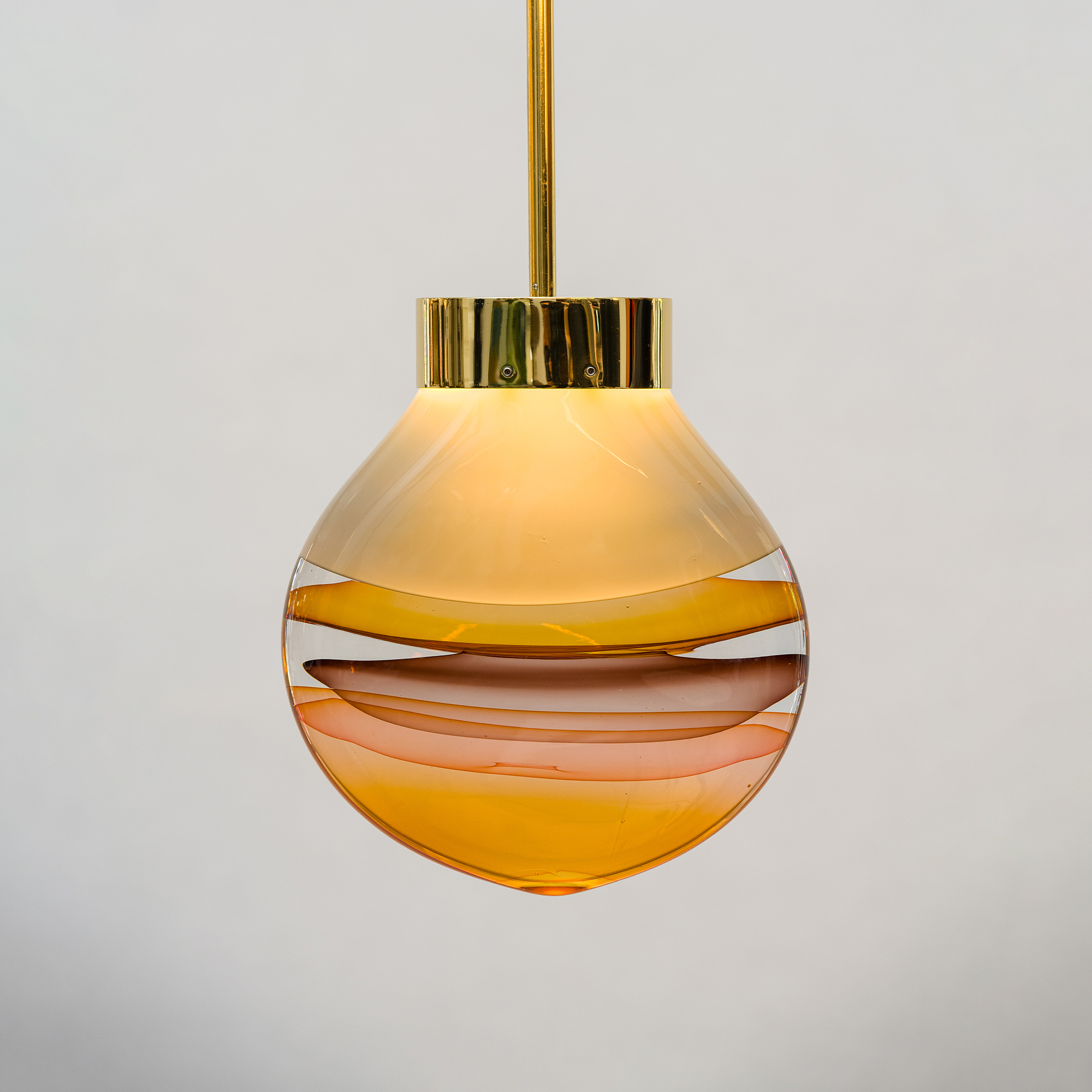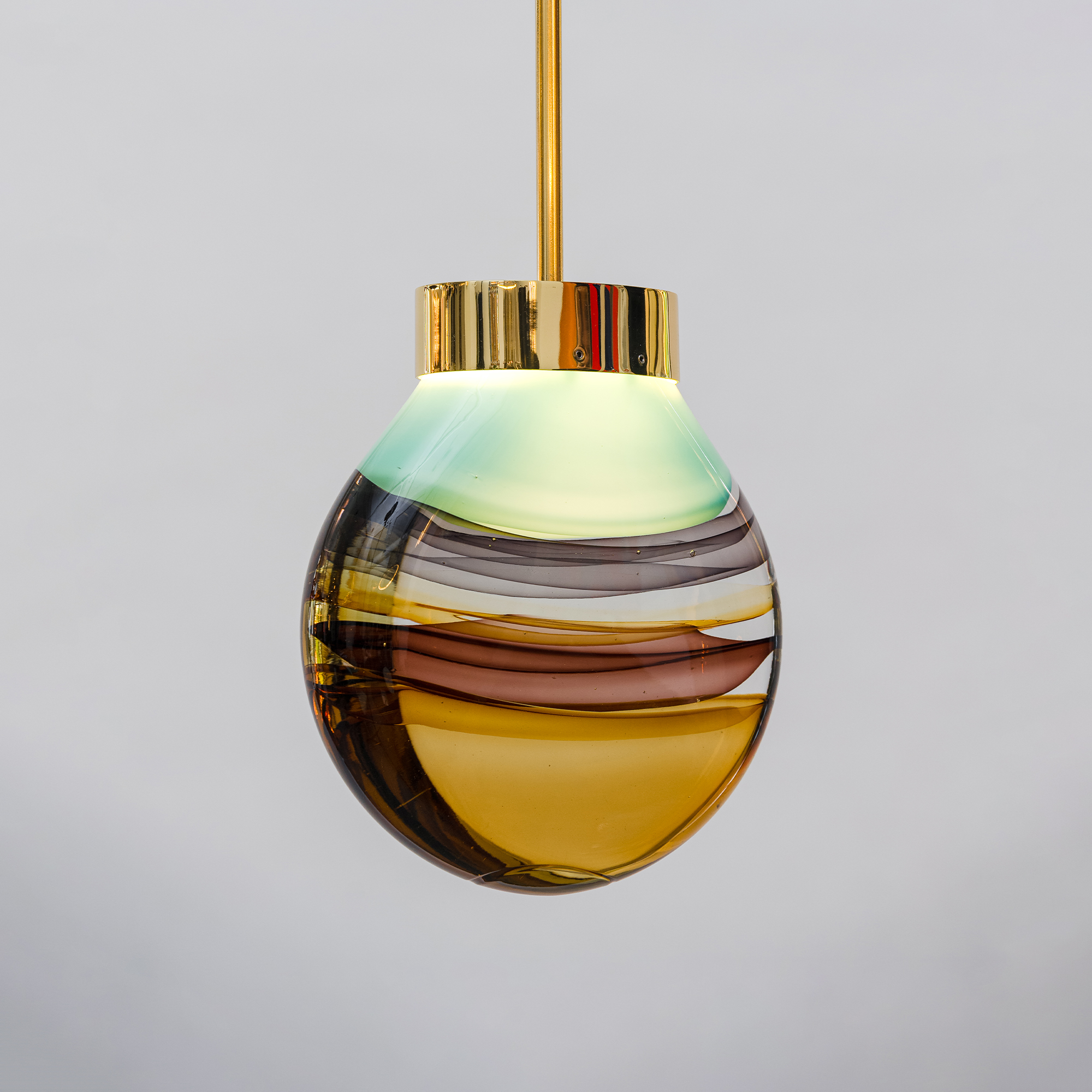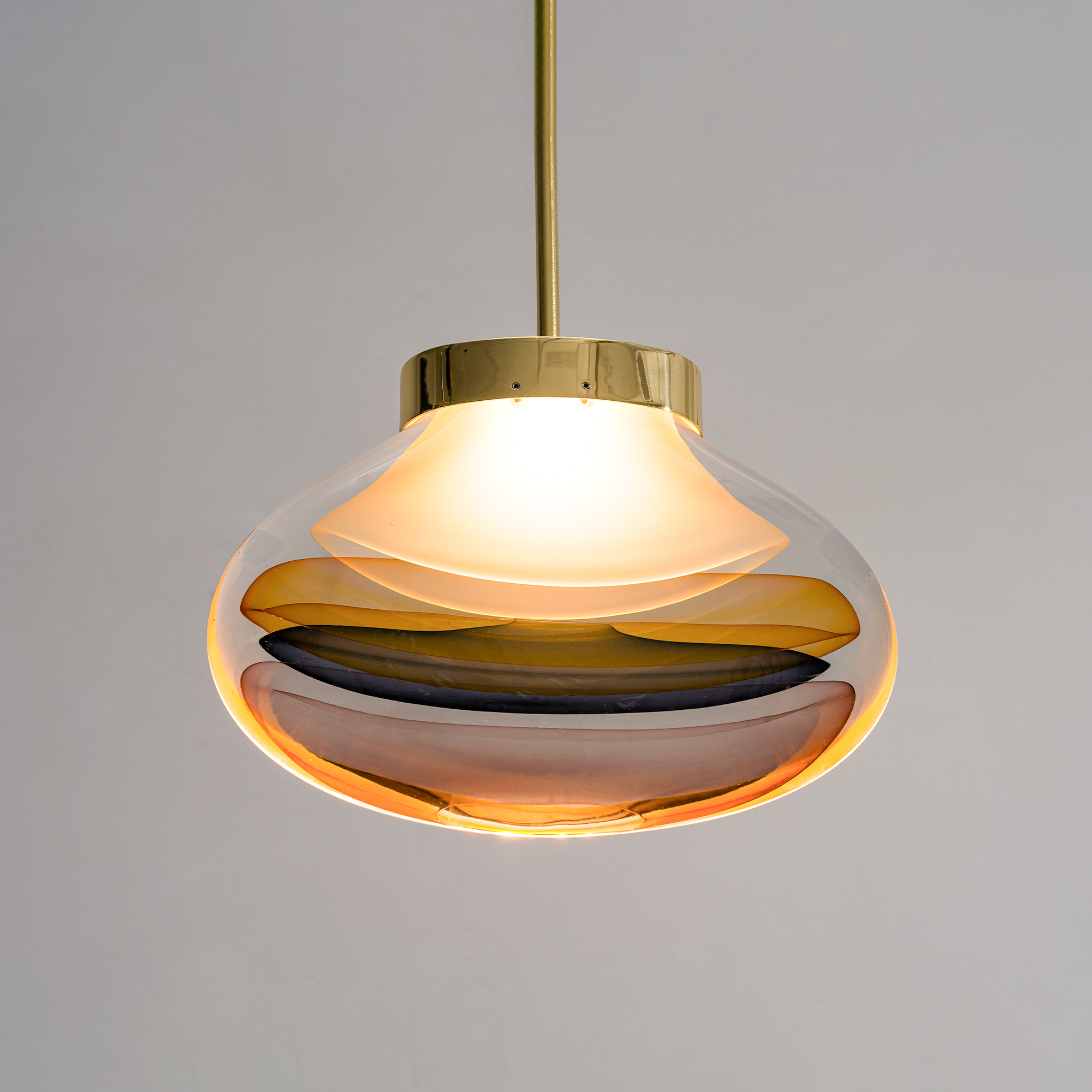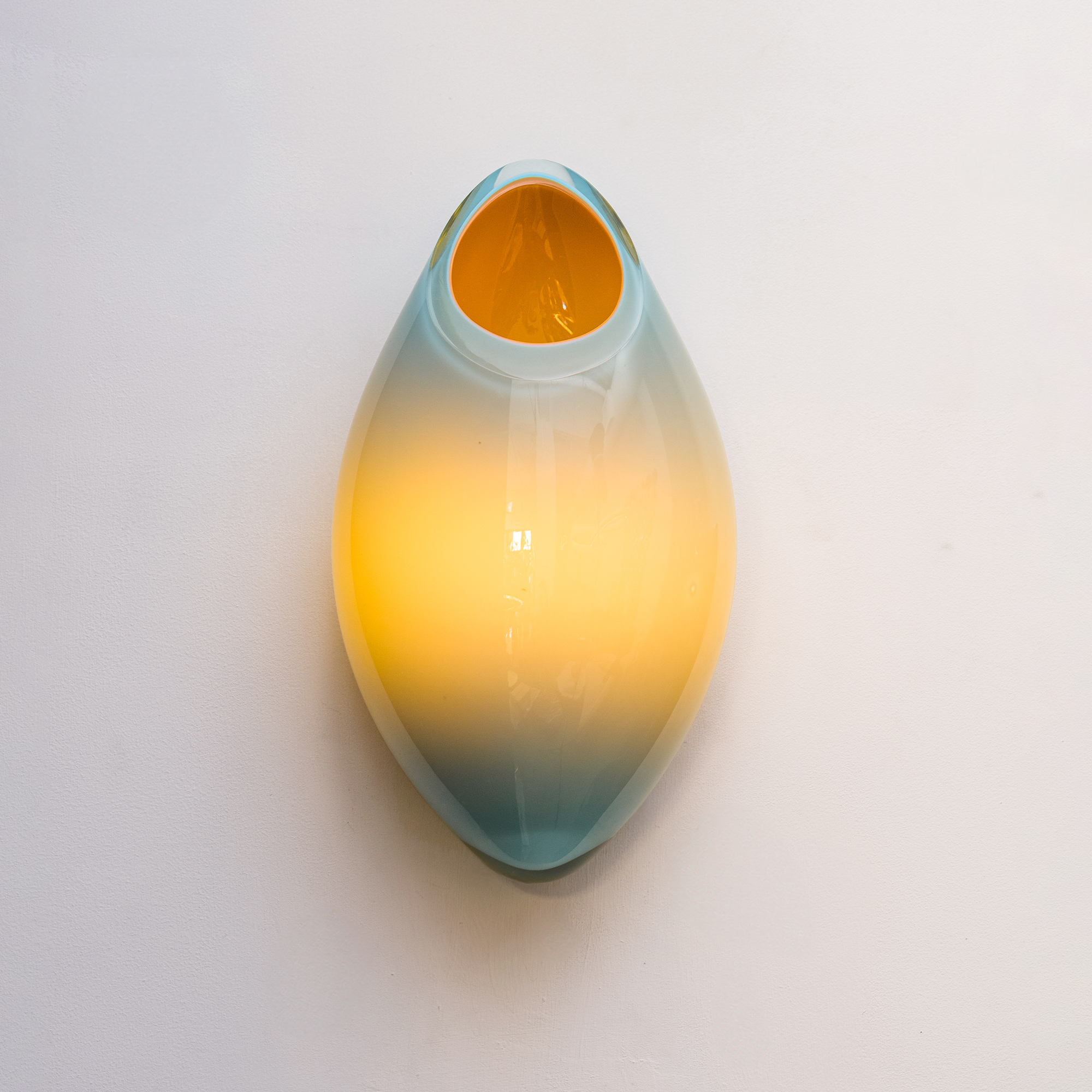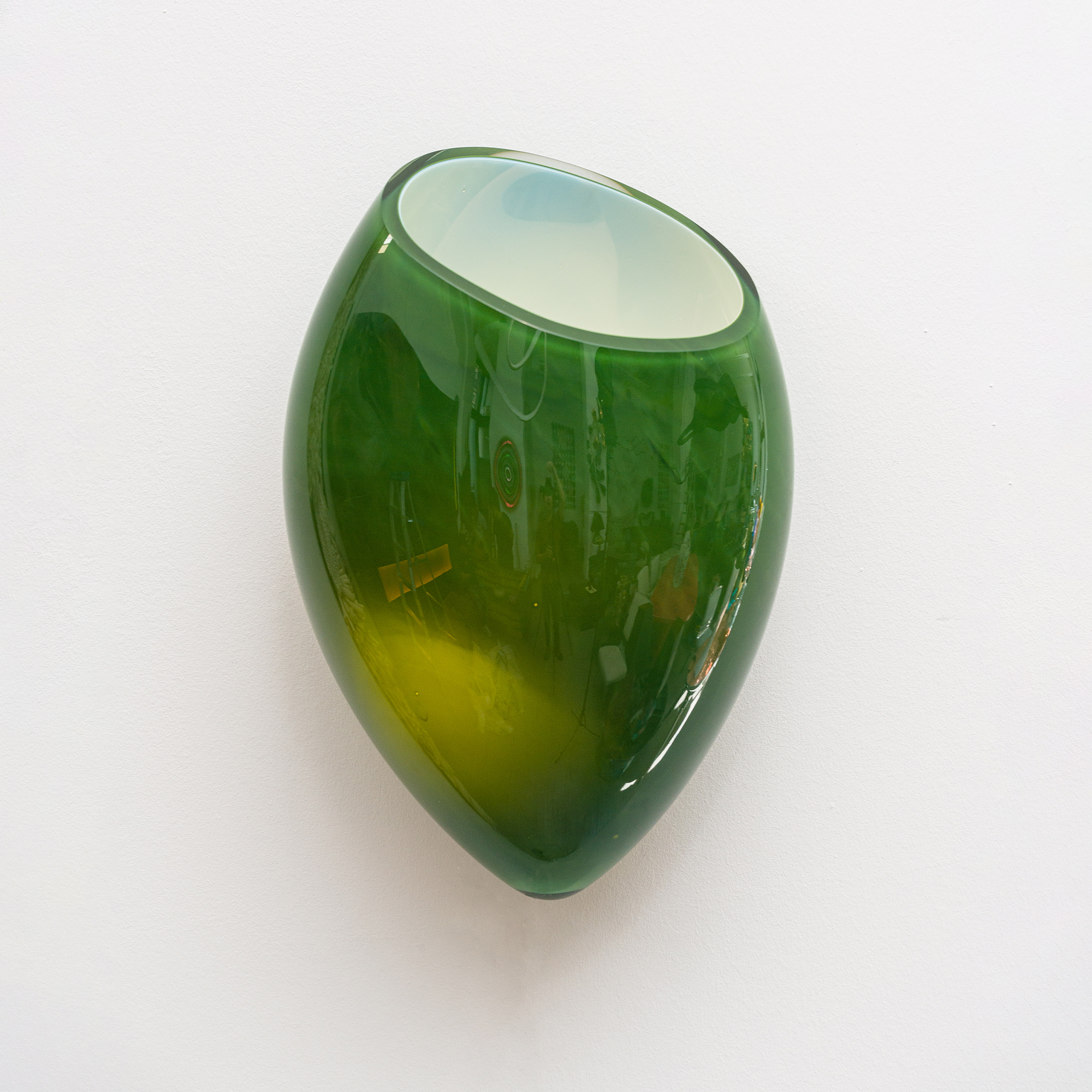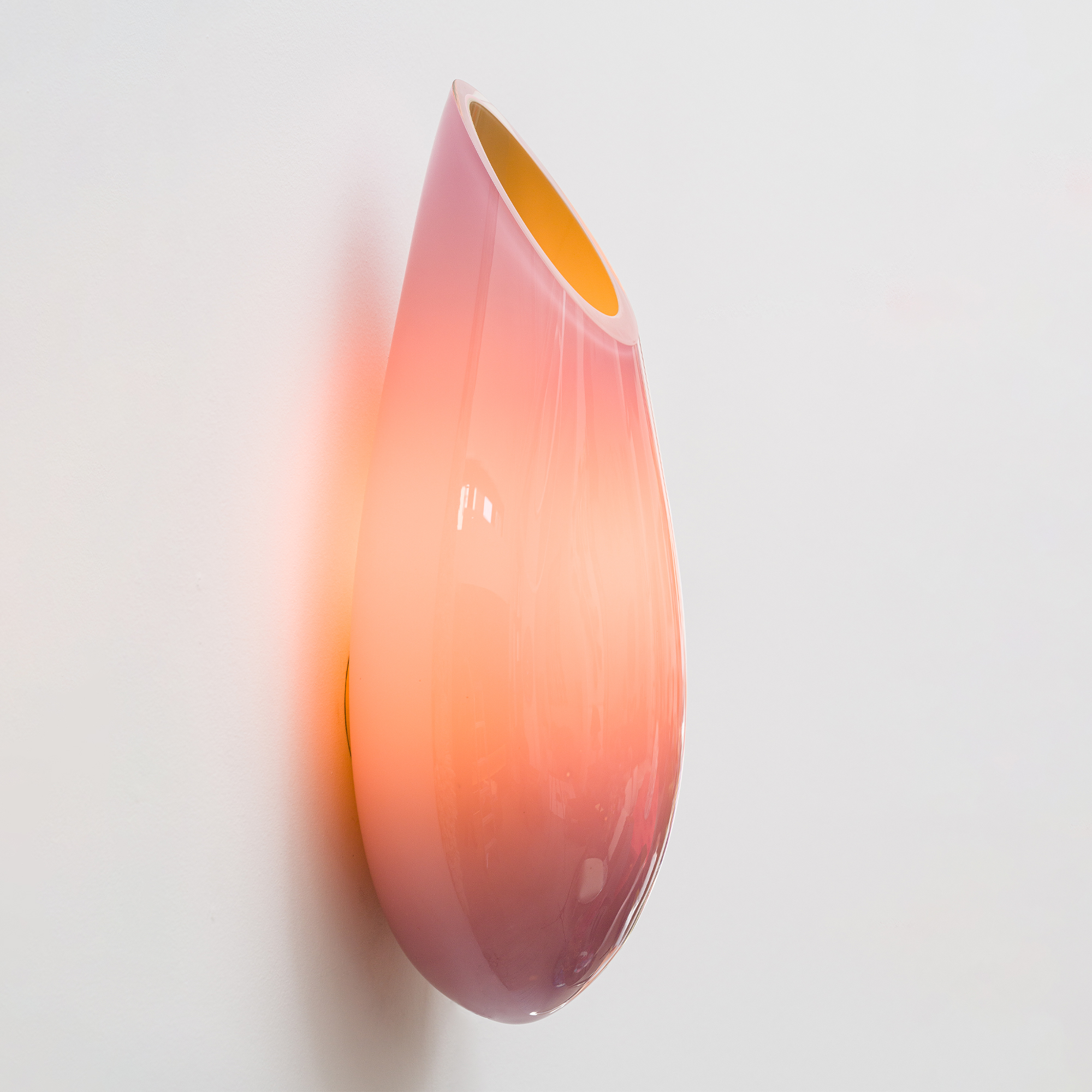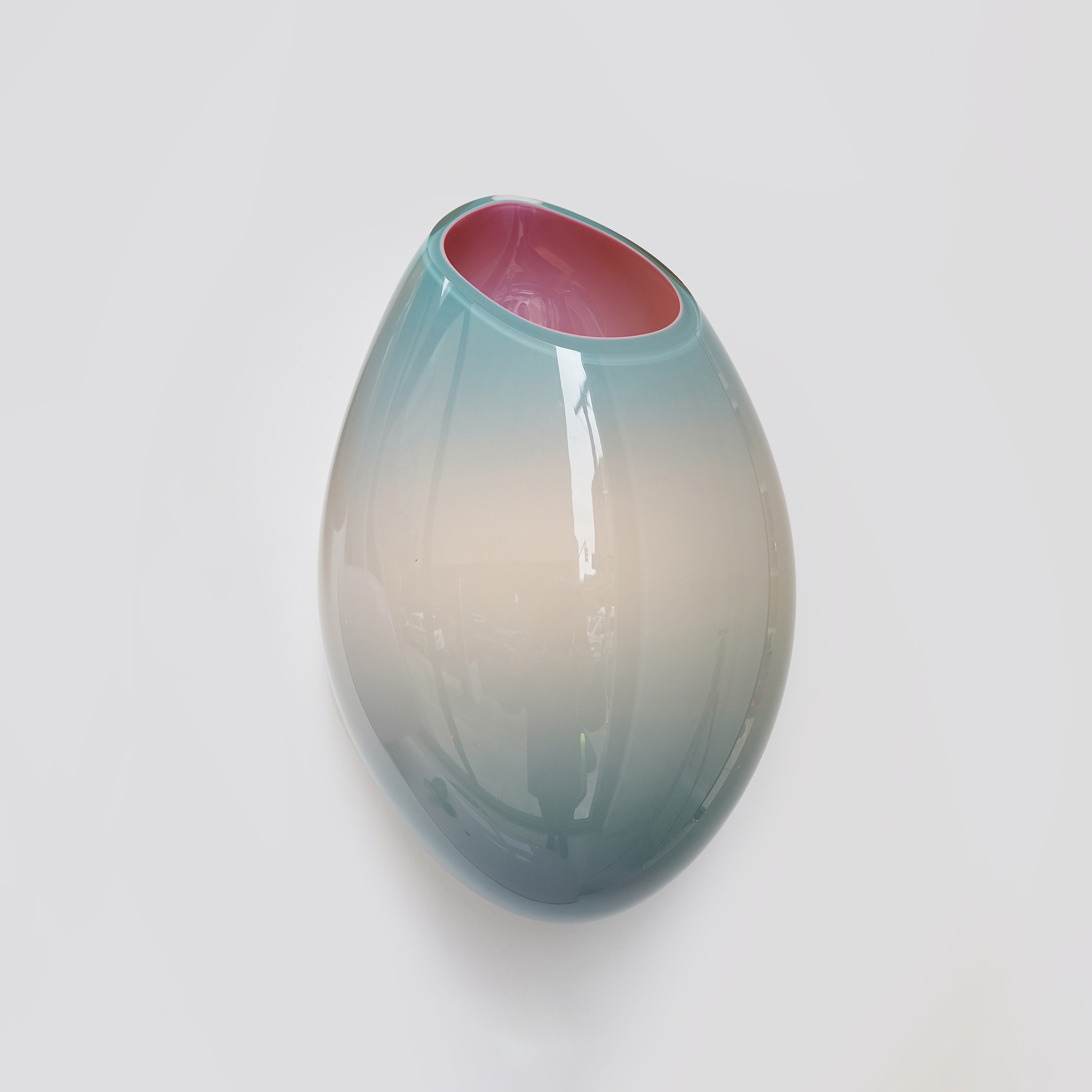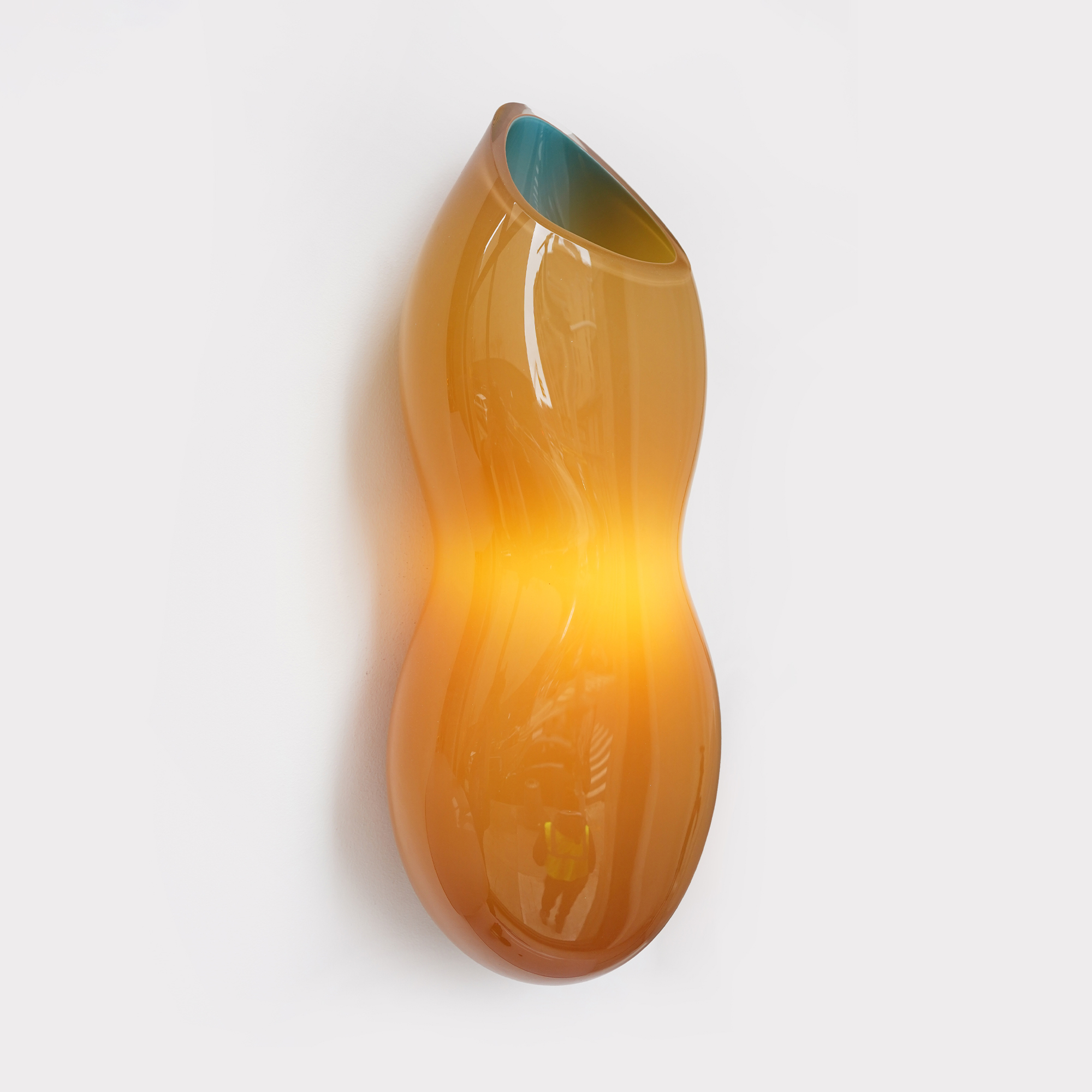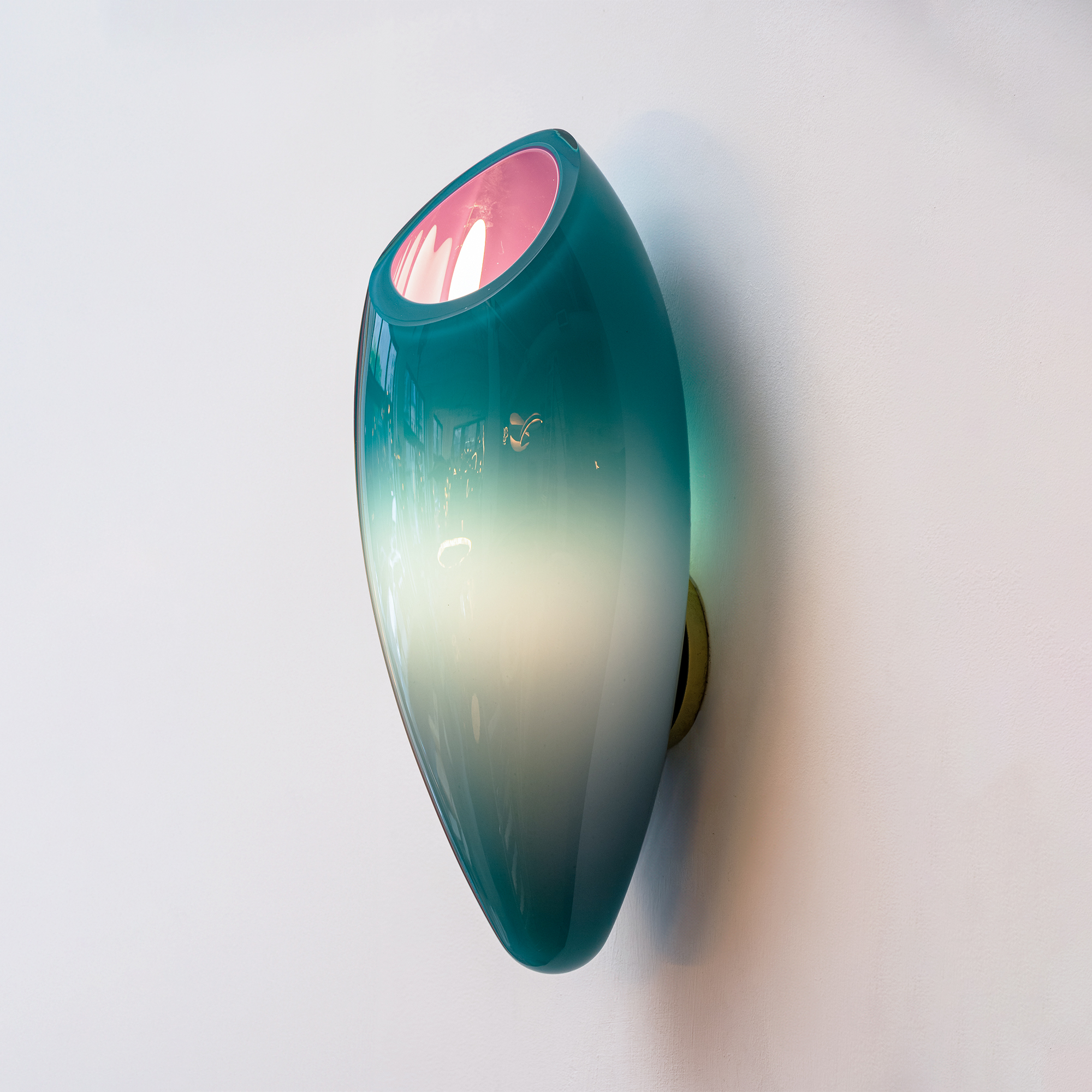Jamie Harris’ spellbinding glass sculptures, which he calls Infusion Blocks, boast a dynamic quality rooted in his ability to capture the alchemy and activity of the glass making process into a static, impenetrable three-dimensional image. Superficially the works present themselves as rich color-field paintings. Vibrant, cascading color combinations expand and contract upon each other, jockeying for space as they are pushed to the picture’s edge. Challenging the inflexible opacity of painting, the innate ability of glass to transmit, reflect, and absorb light creates an ever-changing abstract picture, one that is in a constant dialogue with the surrounding environment.
The individual bands of color, stacked weightlessly in their column, have a surprising amount of depth. They converge, though never to the point of full integration. Within each, the divide between the diaphanous and the saturated provides subtle hints into their formation, though ultimately, what we are left with is a moment suspended in time.
For Harris, his work is a relentless examination of the purity of color and the limitless modulations that can evoke emotional resonance through visual contrasts. Notably, 20th Century Modernist painters like Mark Rothko, Kenneth Nolan, and Ellsworth Kelly have been a source of inspiration, as has the extensive color theory of Joseph Albers. In the way that the mid-century gestural painters brought a sense of action to their canvases through the application of paint, Harris states, “I wanted to capture that flowing sense of color and movement I see when glass is at 2000 degrees.”
For Harris glass has been a near lifelong obsession. A chance encounter with glass blowing at a summer arts camp captivated him well before he reached his teens. Though he pursued a degree in literature at Brown University, the school’s connection with the Rhode Island School of Design was a deliberate draw, granting him access and opportunity to pursue his devotion to the craft. When Harris moved to New York City in the late 1990s, he was suddenly thrust into a community of artists and makers whose kinship helped develop his own unique design aesthetic.
Within the scope of Fine Art there is probably no practice more miraculous, physically demanding, and precarious than glass making. Glass only has a transitory period when it can be manipulated, requiring a team of people to work in tandem to achieve the artist’s ambition. Understandably Harris describes the process as a dance or a performance. His multi-disciplinary method reinterprets traditional techniques, utilizing the foundations of glass blowing as a method of building up an initial form before finishing each work in a kiln, pressing the glass into its ultimate shape, thereby solidifying the image. This act is equal parts experimentation and risk. He describes it as a “science of prediction: anticipating how the color of a bubble blown at the furnace will dilute days later when cast as a solid object, forecasting how fields will distort and move as elements are joined in the casting.”
Because the history of glass has primarily been that of a utilitarian craft material, functionality is something that every glass artist must, at some point, question. Early in his career Harris was able to establish a footing in both applications. Partnerships with Tiffany & Company and Barney’s afforded him the opportunity to sell traditional tabletop items such as vases and bowls, while allowing him the freedom to explore more purely aesthetic endeavors.
Today in addition to his fine art glass sculptures, Harris creates unique, hand-made sculptural lighting. Drawing on the contrast between rigid, geometric metal structures and organic, hand-made glass forms, his pendants, sconces, and chandeliers achieve a balanced universality. By altering the opacity, employing metallic finishes, or creating opalescent and iridescent surfaces, the works can sit at either ends of the spectrum from minimal to extravagant.
Harris has studied at some of the most prestigious glass schools in the country: The Pilchuck Glass School, the Rhode Island School of Design, the Penland School of Crafts, the Haystack School and the Corning Museum of Glass. He also studied with some of the most renowned glass artists in the world, including Dante Marioni, Josiah McElheny, Benjamin Moore, Kathy Eliot and Ben Edols.
His work has been collected by the Mobile Museum of Art (Mobile, AL), the Museum of American Glass (Millville, NJ), and Glasmuseum Ebeltoft (Ebeltoft, Denmark). He is the recipient of numerous fellowships and awards, including those from the Corning Museum of Glass, Creative Glass Center of America, Brooklyn Arts Council, and the Metropolitan Contemporary Glass Group.


